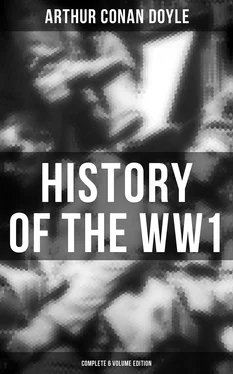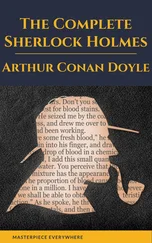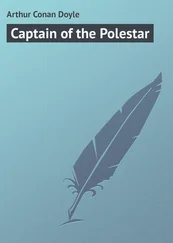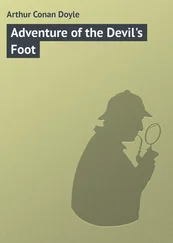The general movement of the French armies has been touched upon in recording the experiences of the British, for after their glorious victory at the Marne and the hold-up at the Aisne, it was at Ypres that the real fighting was done, the rest of the long line down to the Swiss frontier playing a subsidiary part. The Russians, however, had experienced both extremities of fortune, for their victory at Lemberg over the Austrians upon September 2 was of a very glorious character, while their defeat by the Germans at Tannenberg in East Prussia was no less decisive.
All the events of the outset of the war were inglorious for Austria, who received rapidly the punishment which she deserved for her wanton disturbance of the world’s peace. Apart from the blows which she received from Russia, she was severely defeated by the Serbians on August 17, and her invading army was driven out of the country which she had wronged. At the end of the year she had lost the whole of Galicia to the Russians, who in turn had been pushed out of East Prussia by the German armies under Von Hindenburg. An invasion of Poland by the Germans was held up after very severe fighting, failing to reach Warsaw, which was its objective.
These were the main incidents of the world’s war during the months which have been under review. As those months passed the terrific nature of the task which they had undertaken became more and more clear to the British, but further reflection had confirmed them in their opinion that the alternative course of abandoning their friends and breaking their pledge to Belgium was an absolutely unthinkable one, so that however great the trials and sacrifices in blood and treasure, they were not further embittered by the reflection that they could possibly a have been avoided. Very greatly were they cheered in that dark hour by the splendid, whole-hearted help from India, Canada, Australia, and New Zealand, help which was even more valuable from a moral than from a material standpoint. With this brief synopsis we will now return to those operations which are the proper subject of this volume.
XI. The Winter Lull of 1914
Table of Contents
Increase of the Army—Formation of the Fifth Corps —The visit of the King—Third Division at Petit Bois — The fight at Givenchy—Heavy losses of the Indians—Fine advance of Manchesters—Advance of the First Division—Singular scenes at Christmas
The winter lull may be said to have extended from the great combats at Ypres of the middle of November to the opening of the spring campaign in March 1915; but we will only follow it here up to the end of the year. It was a period of alternate rest and discomfort for the troops with an ever-present salt of danger. For days they found themselves billeted with some approach to comfort in the farmhouses and villages of Flanders, but such brief intervals of peace were broken by the routine of the trenches, when, in mud or water with a clay cutting before their faces and another at their backs, they waited through the long hours, listening to the crack of the sniper’s rifle, or the crash of the bursting shell, with an indifference which bordered upon thankfulness for anything that would break the drab monotony of their task. It was a scene of warfare which was new to military experience. The vast plain of battle lay in front of the observer as a flat and lonely wilderness, dotted with ruined houses from which no homely wreath of smoke rose into the wintry air. Here and there was an untidy litter of wire; here and there also a clump of bleak and tattered woodland; but nowhere was there any sign of man. And yet from the elevation of an aeroplane it might be seen that the population of a large city was lurking upon that motionless waste. Everywhere the airman would have distinguished the thin brown slits of the advance trenches, the broader ditches of the supports and the long zigzags of the communications, and he would have detected that they were stuffed with men —grey men and khaki, in every weird garment that ingenuity could suggest for dryness and for warmth—all cowering within their shelters with the ever-present double design of screening themselves and of attacking their enemy. As the German pressure became less, and as more regiments of the Territorials began to arrive, taking some of the work from their comrades of the Regulars, it was possible to mitigate something of the discomforts of warfare, to ensure that no regiments should be left for too long a period in the trenches, and even to arrange for week-end visits to England for a certain number of officers and men. The streets of London got a glimpse of rugged, war-hardened faces, and of uniforms caked with the brown mud of Flanders, or supplemented by strange Robinson Crusoe goat-skins from the trenches, which brought home to the least imaginative the nature and the nearness of the struggle.
Before noting those occasional spasms of activity—epileptic, sometimes, in their sudden intensity—which broke out from the German trenches, it may be well to take some note of the general development of those preparations which meant so much for the future. The Army was growing steadily in strength. Not only were the old regiments reinforced by fresh drafts, but two new divisions of Regulars were brought over before the end of January. These formed the Twenty-seventh and Twenty-eighth Divisions under Generals Snow and Bulfin, two officers who had won a name in the first phase of the war. The two Divisions together formed the Fifth Army Corps under General Plumer, the officer who had worked so hard for the relief of Mafeking in 1900. The Divisions, composed of splendid troops who needed some hardening after tropical service, were constituted as follows, the list including territorial battalions attached, but excluding the artillery as well as the four original regular units in each brigade:
| FIFTH ARMY CORPS—GENERAL PLUMER. |
| 27th Division—General Snow. 80th Brigade—General Fortescue.Princess Pat. Canadians. 4th Rifle Brigade. 3rd King’s Royal Rifles. 4th King’s Royal Rifles. 2nd Shrop. Light Infantry. 8lst Brigade—General MacFarlane.9th Royal Scots (T.F.). 2nd Cameron Highlanders. lst Argyll and Sutherlands. 1st Royal Scots. 2nd Gloucesters. 9th Argyll and Sutherlands (T.F.) 82nd Brigade—General Longley.1st Leinsters. 2nd Royal Irish Fusiliers. 2nd Duke of Cornwall’s Light Infantry. 1st Royal Irish. 1st Cambridge (T.F.). Army Troops, 6th Cheshires. |
28th Division—General Bulfin. 83rd Brigade—General Boyle.2nd E. Yorkshire. 1st King’s Own York. Light Infantry. 1st Yorks. and Lancasters. 2nd Royal Lancasters. 3rd Monmouths (T.F.). 6th Royal Lancasters (T.F.). 84th Brigade—General Winter.2nd Northumberland Fusiliers. 1st Suffolks. 1st Welsh. 2nd Cheshires. 12th London Rangers (T.F.). 1st Monmouths (T.F.). 85th Brigade—General Chapman.2nd East Kent. 2nd East Surrey. 3rd Middlesex. 3rd Royal Fusiliers. 8th Middlesex (T.F.). |
Besides this new Fifth Army Corps, there had been a constant dribble of other territorial units to the front, where they were incorporated with various regular brigades. The London Scottish, which had done so well, was honoured by admission to the 1st Brigade of Guards. The Artists’ Rifles, 28th London, had the unique distinction of being set aside as an officers’ training corps, from which officers were actually drawn at the rate of a hundred a month. The Honourable Artillery Company, brigaded with the 7th Brigade, was among the first to arrive. Conspicuous among the newcomers were the London Rifle Brigade, the 4th Suffolk, the Liverpool Scottish, the 5th and 6th Cheshires, the 1st Herts, the 2nd Monmouthshires, Queen Victoria Rifles, and Queen’s Westminsters. These were among the earlier arrivals, though it seems invidious to mention names where the spirit of all was equally good. Among the yeomanry, many had already seen considerable service —notably the North and South Irish Horse, who had served from the beginning, the Northumberland Hussars, the North Somersets, the Oxford Hussars, and the Essex Yeomanry. Most of the troops named above shared the discomfort of the winter campaign before the great arrival of the new armies from England in the spring. There can be no better earned bar upon a medal than that which stands for this great effort of endurance against nature and man combined.
Читать дальше












